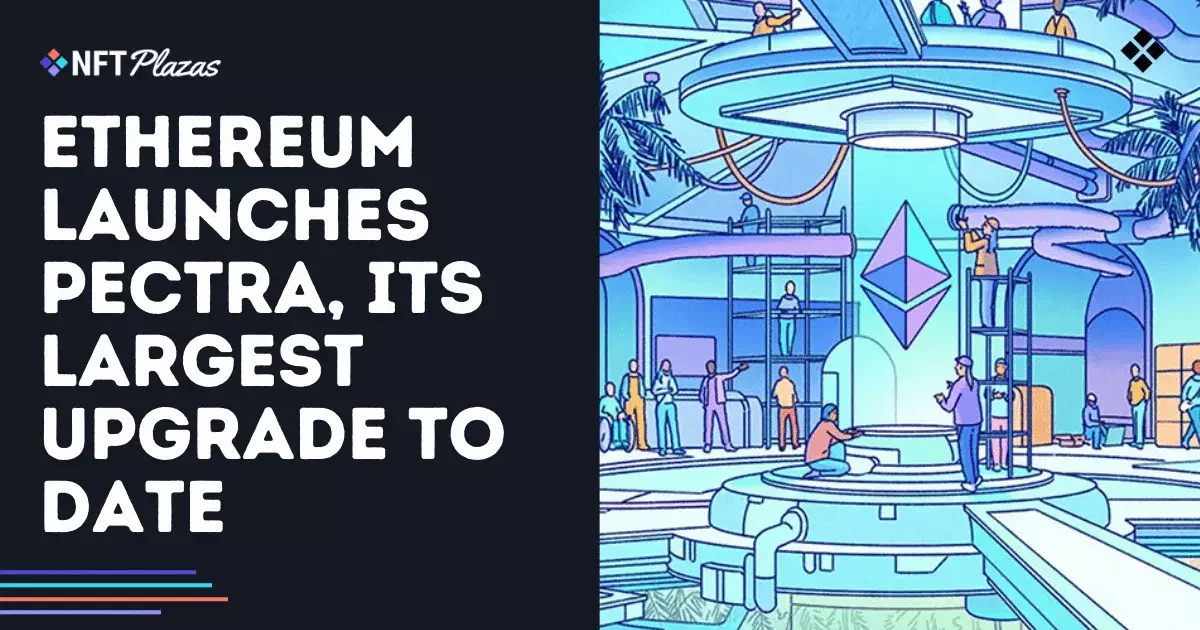In the ever-evolving landscape of blockchain technology, Ethereum’s latest upgrade, dubbed Pectra, heralds a significant shift in the way the network operates. Activated recently, this enhancement is coming off the heels of the Dencun update, further cementing Ethereum’s determination to scale and adapt in a competitive environment. What’s particularly striking about Pectra is not just its technical improvements but the philosophical shift it embodies—aiming for a blend of scalability and usability that could redefine user interaction in the crypto space.
Yet, while the upgrade has been lauded for its sweeping array of changes—including the introduction of Ethereum Improvement Proposals (EIPs) that tackle everything from account function to data processing capabilities—one can’t shake the feeling that this might be more about ambition than actual usability.
Technical Marvel or Marketing Stunt?
Ethereum’s developers might be patting themselves on the back, but the reality is more nuanced. Pectra’s most talked-about feature, the EIP-7702, which allows user accounts to temporarily function like smart contracts, raises an important question: will this really simplify user experience? The promise of full account abstraction—a dream for many—hangs tantalizingly close. However, one must consider whether the crypto community, notorious for its resistance to change, is ready to embrace such a paradigm shift. If history serves as a teacher, many promising upgrades have faltered on the altar of user adaptation.
Moreover, the increased maximum stake per validator to 2,048 ETH (under EIP-7251) signals an effort to further centralize validation within the Ethereum ecosystem. While on paper, this seems to enhance operational efficiency, it runs the risk of creating an oligopoly among validators. How decentralized can Ethereum truly remain if larger players consolidate their positions? It’s a double-edged sword that could earn Ethereum efficiency at the cost of its foundational principles.
Layer 2 Solutions: Are We Ready for More?
Layer 2 networks, which aim to alleviate the strain on Ethereum’s base layer, are often touted as the key to scalability in the ecosystem. Pectra’s increase in data availability with EIP-7691—raising the capacity for off-chain “blobs” from 3 to 6 per block—certainly seeks to address this growing need. However, one must question if these small steps will genuinely keep up with the escalating demands of users seeking faster, more efficient transactions.
The narrative that Pectra is revitalizing the Ethereum network may have legs, but it also teeters on the edge of overselling what it can actually deliver. Developers are already projecting that future upgrades will be necessary to stave off congestion. It seems rather shortsighted to roll out an upgrade with a built-in acknowledgment of its limits.
A Need for Decentralization
As the Ethereum foundation continues to elevate its technical attributes, it would do well to remember the principle that set it apart in the first place: decentralization. Critics argue that in each upgrade, the balance between performance and decentralization is increasingly wavering. The community’s growing concern over the network’s evolving structure raises pertinent questions. Is Ethereum sacrificing its ideals for performance gains?
Research indicates that managing bandwidth and storage is an impending burden for validators. With the looming arrival of the next upgrade, Fusaka, the Ethereum team must tread carefully. Developers must grapple with the fine line between performance enhancement and preserving a decentralized ethos. The crypto community’s enthusiasm cannot fill the void left by a compromised foundational structure.
The Road Ahead: Anticipatory Anxiety for Fusaka
As we pivot toward the next anticipated upgrade, Fusaka, the sentiments surrounding its deployment reveal an intriguing duality. Excitement about further improvements in data availability and efficiency offerings like the PeerDAS protocol are tempered by apprehension. Will this upgrade further columnize Ethereum’s user base? Will more advanced functionalities be accessible only to a select few?
In a bustling crypto market where competition is fierce and innovation is ceaseless, Ethereum’s journey is emblematic of a broader narrative—an unpredictable path that oscillates between groundbreaking technology and traditional hurdles. The hype surrounding Pectra could easily dissipate into bitter frustration if its promises fade in the face of a rigid user culture that resists evolution. The time has come for Ethereum not just to deliver novel upgrades but to ensure that such innovations actualize a truly democratized and efficient network.













